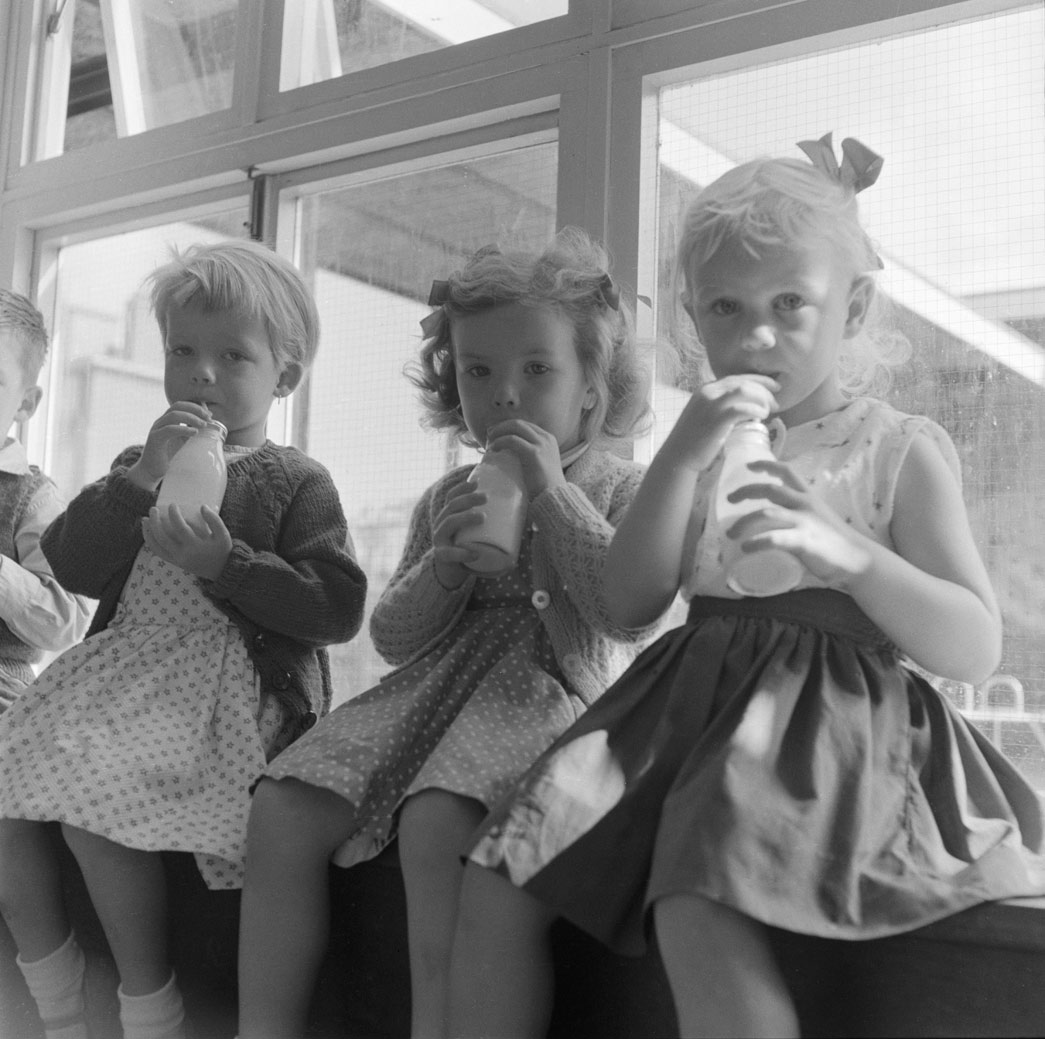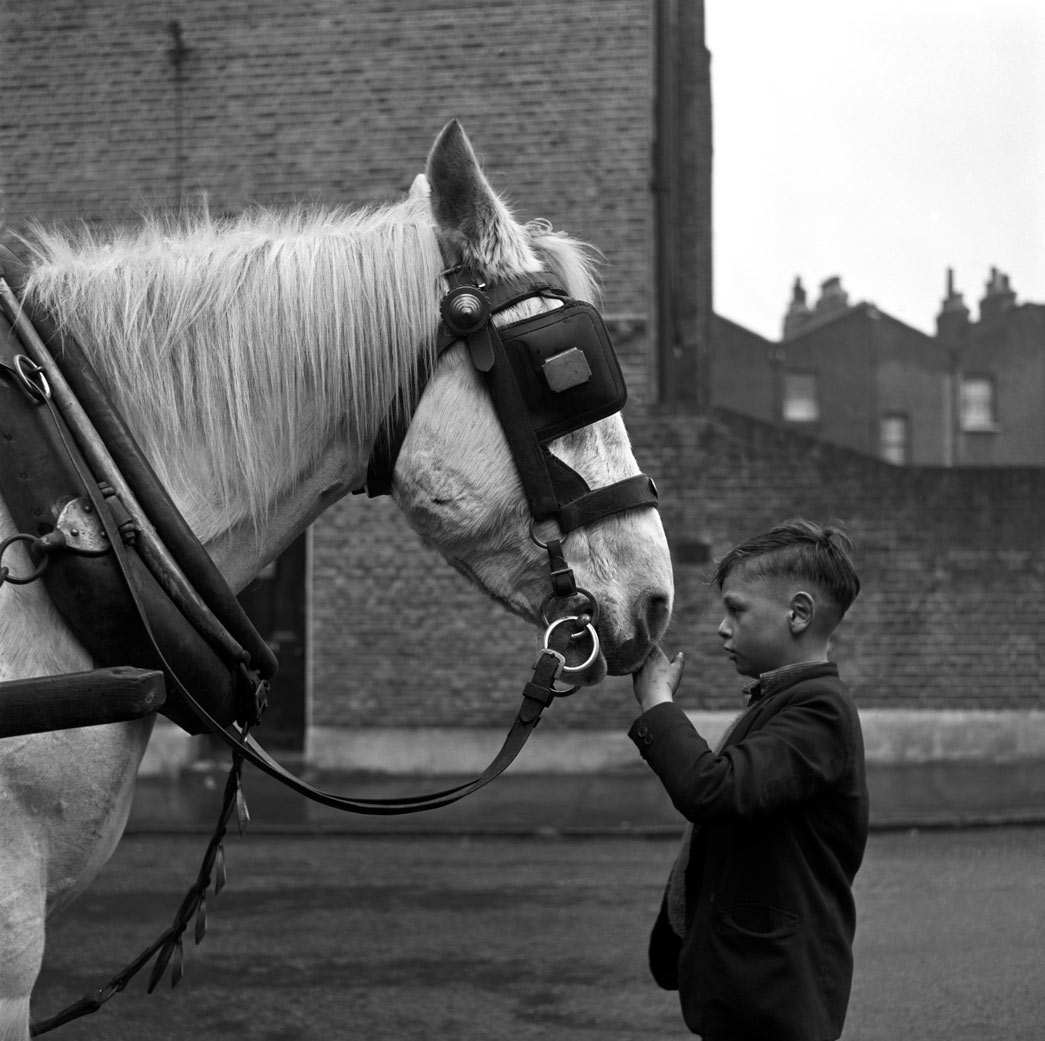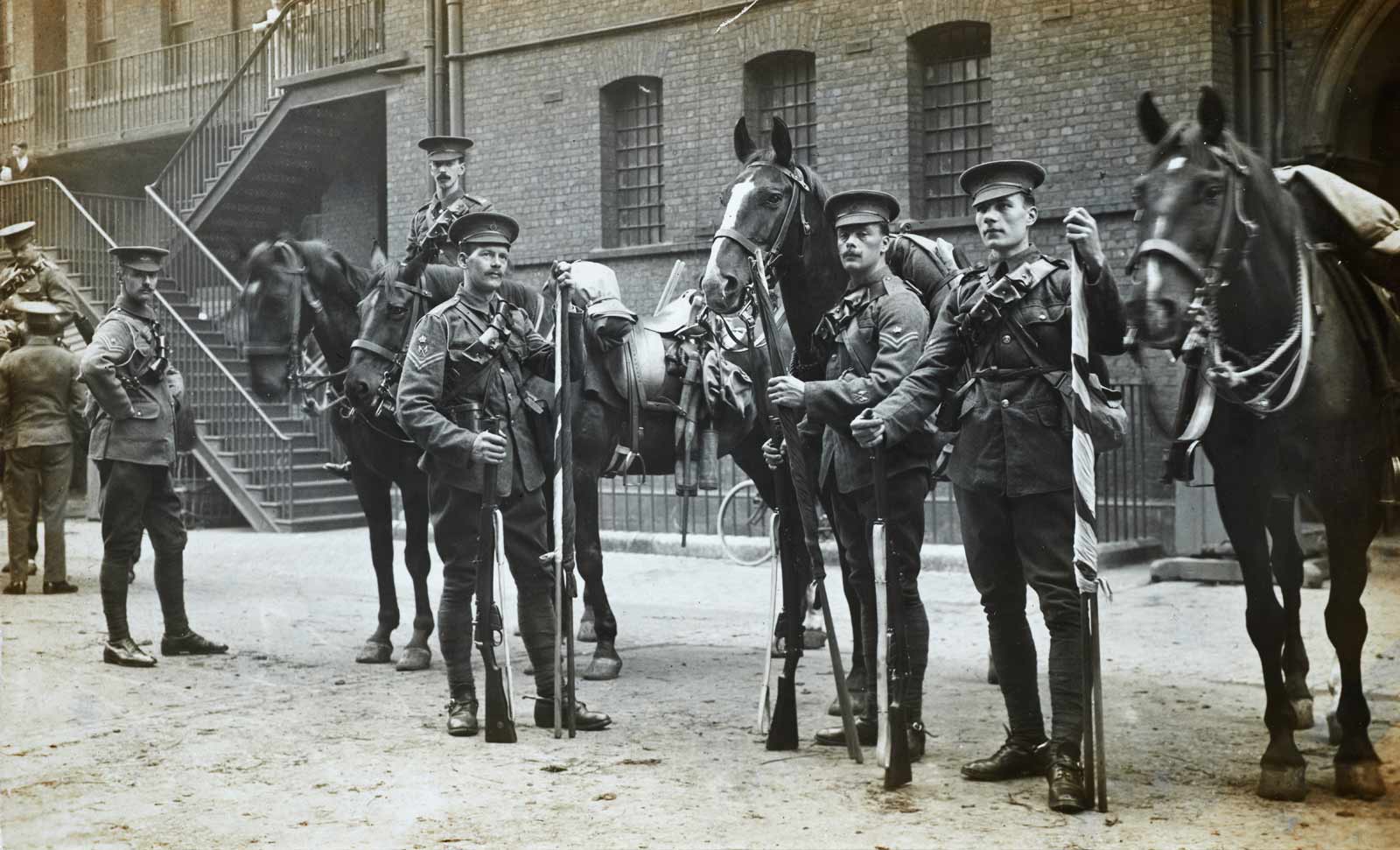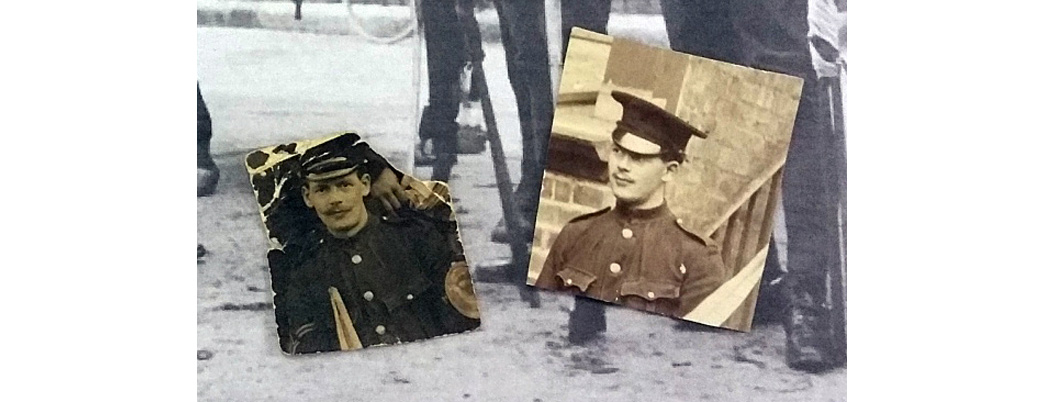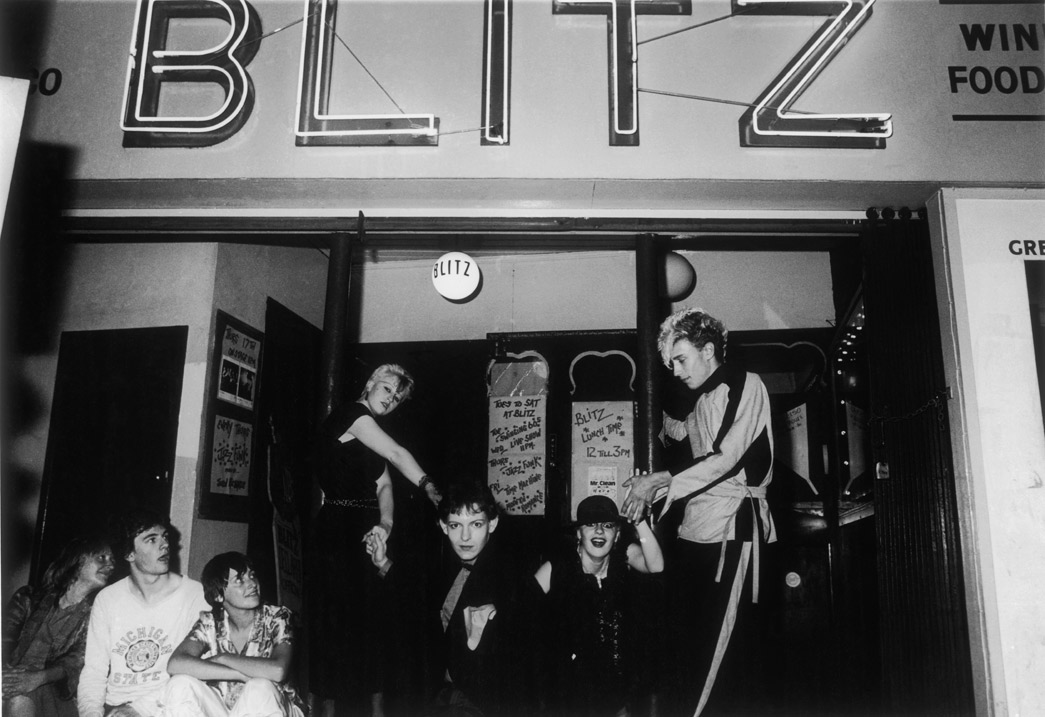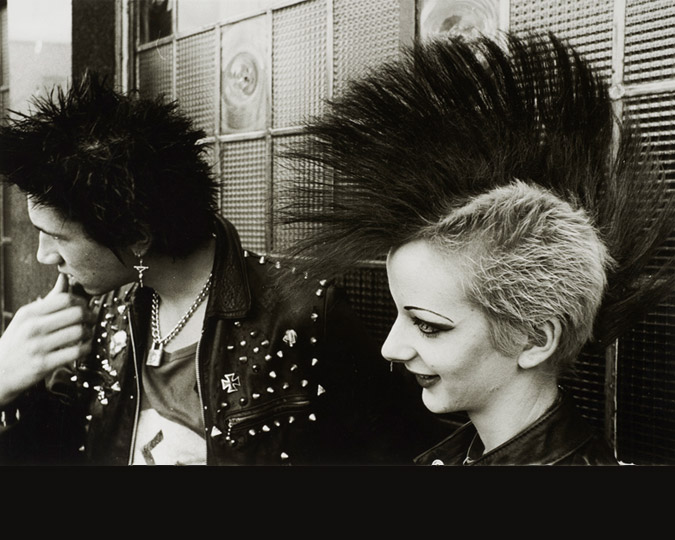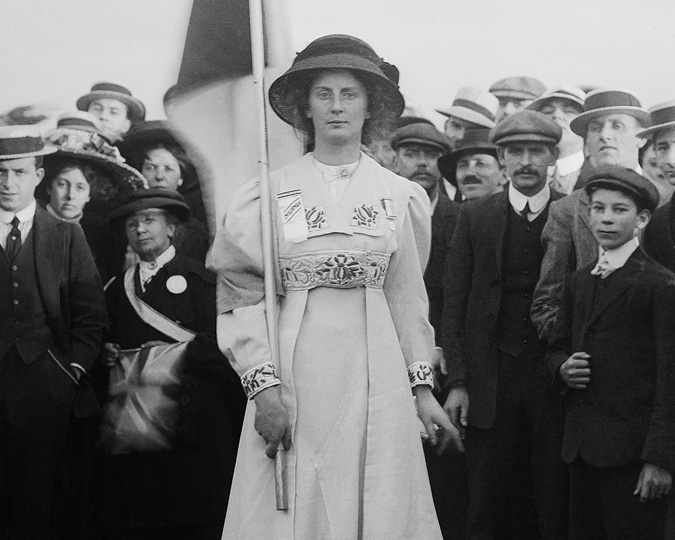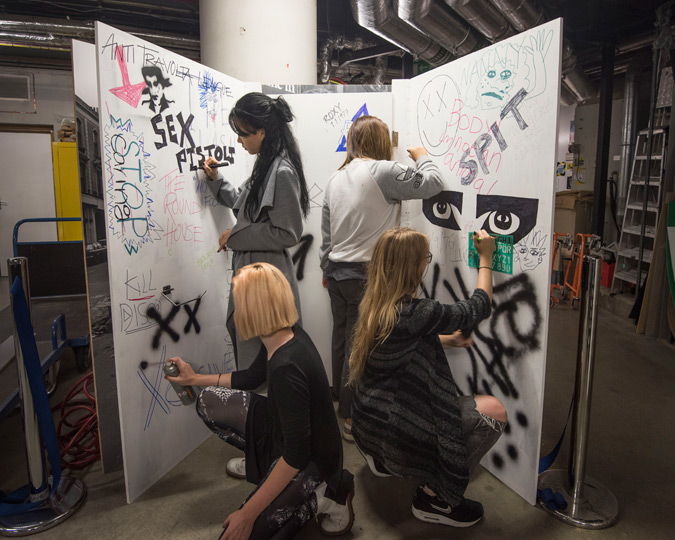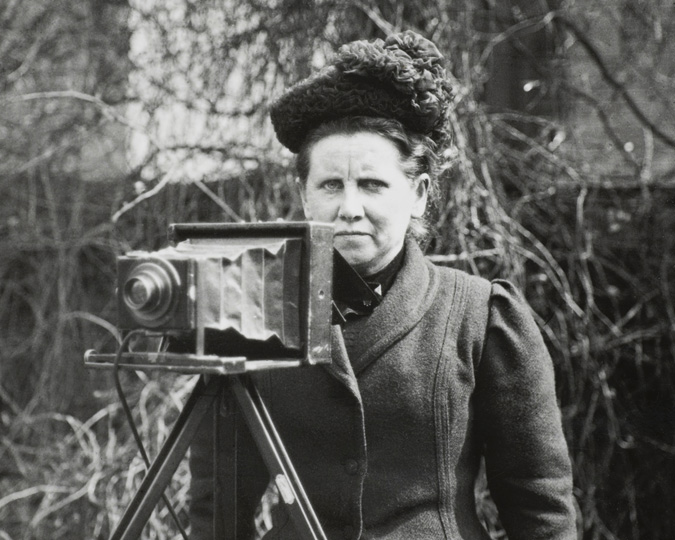As Curator of Photographs, occasionally someone writes to tell me they have actually spotted themselves or a relative within a photograph the museum has either published online or exhibited. In recent months there seems to have been a running spate of this, each with fascinating stories behind their finds.
My correspondents usually tell me something about
the given scene or location; a workplace, a significant event or a street they
once lived in perhaps. I might be offered more information about the scenario
at that time. Sometimes there isn’t much to tell, only a desire to share their
connection with the image they’ve encountered. However, when someone is
actually present in a picture that they haven’t seen before, it brings them a great
thrill; a wonderful surprise from the past and a mini victory of discovery. As
the curator who has put that image out there, it feels very rewarding too,
knowing you’ve played a part in uniting image with subject. It can be very powerful,
whether the photograph is really well known or not. I love for example The Guardian’s feature ‘That’s me in the Picture’ for giving a famed photograph an alternative and often
captivating side story.
In February this year I received an email from a woman who had spotted on our Collections Online pages a photograph of the nursery school in Peckham which she had attended in 1959. She wrote on the off chance that we might hold more photographs taken there as she could vividly remember some prints once belonging to her mother of her ‘dressing up’ at the nursery. The prints were gone and she longed to see the images again.
The photograph she had seen online was by freelance photographer Henry Grant. We hold his entire archive of black and white photographs taken in London from the late 1940s through to the 1980s. He arranged this archive into a vast series of contact sheets and corresponding negatives, which capture the spectrum of London life over the years.
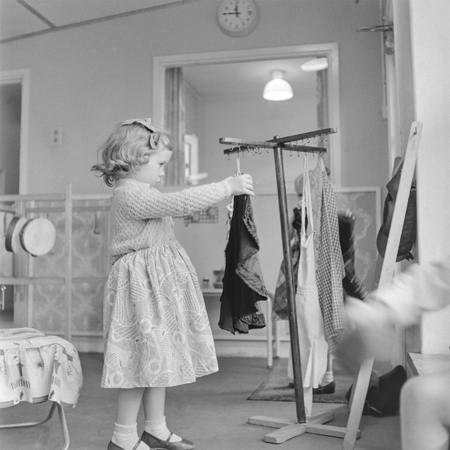
A young girl playing dressing up at Sumner Nursery School, Peckham, 1959
Henry Grant Collection/Museum of London. ID no. HG1853/30
An active socialist, Grant extensively
documented public services such as the NHS and schools including Sumner
Nursery School, where he took 64 pictures in 1958.
Although
I thought it unlikely that she would find the specific photographs she was
searching for, as the images she had in mind could have been made by anyone, I
proceeded to send her some low resolution snaps of the rest of the contact sheet.
There in frames 18 and 30 was indeed a young girl - the enquirer in question.
This happy customer was delighted to have been reunited with these images, ordering prints from our picture library. She shared rekindled memories with me such as the little ‘half-pint’ doors she used to walk through at the nursery and the Headmistress’s name, Miss Cronin.
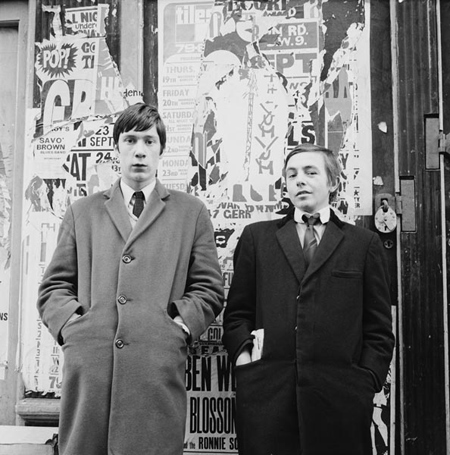
Two young men, Carnaby Street, 1967
Henry Grant Collection/Museum of London. ID no. HG2386/24
Just last week a man wrote to tell me that he is the man on the left in this picture, another by Henry Grant. He had been told that a
photograph of him had been spotted in a book about Carnaby Street. So he had
sought out the book and looked online to eventually discover it in our
collections.
The image strikes me for the slight awkwardness between the young men and the camera; are they keen to pose, reluctant, playing up to an expected role? Were they just hanging out or were they asked to stand there? Keen to know more I requested a little background and was pleased to be offered a glimpse into his mod life at that time.
I’ve learnt about the clubs he attended, from the mod scene All Nighters in Tottenham to La Discotheque in Wardour Street. The clothes he sought out, the range of jobs he pursued and how what you wore for the role dictated which he would take up. Finally, I really liked his comment: ‘It’s all been quite bizarre. The photo has brought it all back- we never had cameras and taking a selfie would not have been cool.’ A contemporary reflection upon a photograph almost 50 years old.
In January this year I was contacted by a man
sharing his personal find whilst flicking through a 2012 edition of Amateur
Photographer. The magazine included a feature on a small display of work we
were showing at the museum. This was a recent acquisition I made of photographs
by Frederick Wilfred, a wedding photographer by profession, who happened to have made
some remarkable street photographs in the 1950s. Wilfred died in 2010 and his
son approached the museum, offering for us to make prints from digital scans of
the original negatives. They are wonderful images, but they were not annotated
in any way, therefore no details of individuals or locations were recorded. By
coincidence, this gentleman turned a page of a magazine to suddenly see a photograph
of himself as a young boy.
He claimed to be the lad stood next to the horse in this wonderful composition, photographed during a trip to London with his parents around 1952/53. He was of course amazed to see it through this chance encounter.
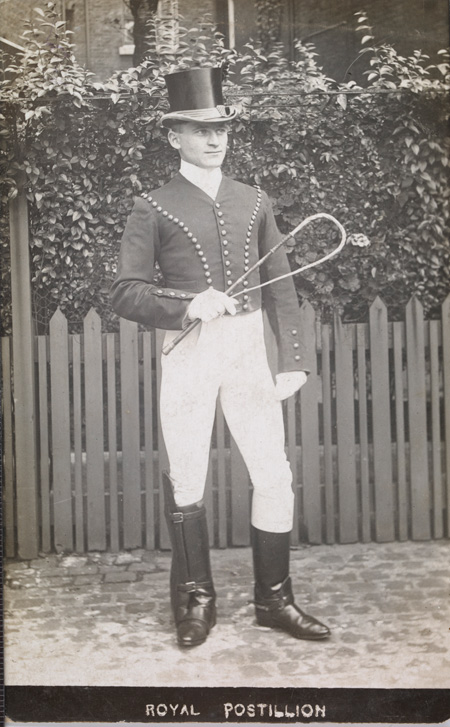
Postillion at the Royal Mews c. 1908
Photographed by Christina Broom. ID no. 2014.2/1340
After the Museum of London Docklands's exhibition ‘Soldiers and Suffragettes: The photography of Christina Broom’ exhibition closed in November last year, I was contacted by someone who visited close to the last day. This time it was me who was perhaps even more pleased about the connection than the individual in question. I had spent the previous two years gathering information and researching into the life of Christina Broom, about which very few primary sources exist. This exhibition visitor saw a photograph on the wall of a Postillion at the Royal Mews - his grandfather.
He worked at the Palace from the reign of King Edward VII until after the Second World War. As he served in the Royal Household his wife and children lived on site in the Royal Mews too. Broom was a regular visitor to the Mews, photographing there for almost 30 years and selling her work from a small stall outside the gates of the Riding School.
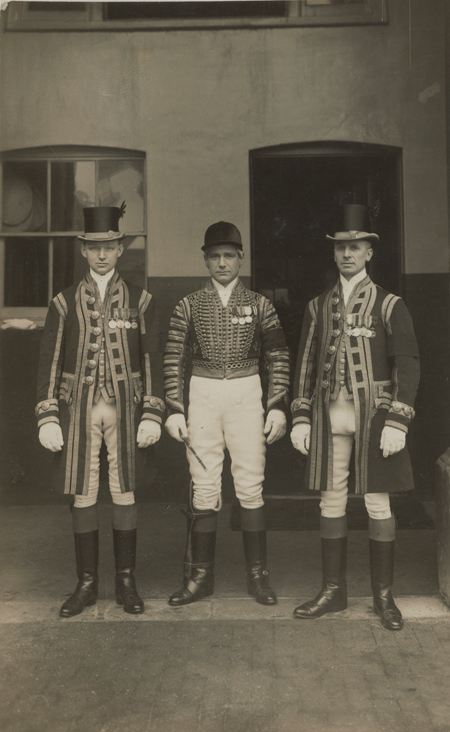
Footmen and Postillion at the Royal Mews, date unknown,
Photographed by Christina Broom. ID no. 2014.2/1356
The man who contacted me told how he had long
known about Mrs Broom from the stories his father had shared with him of his
time living in the Mews. He and his siblings had even helped Broom out on her
stall, acting as her ‘representatives’ and sharing her business cards with
potential customers. Their father, the Postillion, helped sell postcards of
himself made by Broom to tourists.
Broom had become well acquainted with the
family. She had photographed them several times, and those photographs had been
passed down the generations. An email exchange allowed me to see some of these
and others documenting life at the Mews. They are tender, warm images,
projecting quite clearly that longstanding relationship Broom had nurtured over
the years working there.
The museum holds several thousand Broom images, including many of the Royal Mews staff. I had selected these particular ones for the exhibition and book because of the strong compositions and detail within the uniforms. Thanks to the descendant’s interest, this photograph helped to reinforce my impression of Broom’s working relationships and provide rare snippets of her practice.
Recently I greeted a visitor from Australia who brought with him two small pieces of photographs depicting his great-grandfather. The rest of the photographs had been cut away years ago by another family member, resulting in a total loss of visual context. The visit was prompted by a further Broom photograph which had made it online in a Daily Mail article in 2014.
Viewed in Australia it had leaped out at my visitor as the figure in the foreground on the left was his Great-Grandfather and subject of the tiny fragments of photographs (alternative images) he was now sharing with me. He had never seen this photograph before. A trip across the globe allowed him to be up close with the original.
When I was developing our exhibition Stomping Grounds: Photographs by Dick Scott-Stewart I had initially aimed to identify some people within the images, particularly those taken within the Blitz club. I guess I was looking for early records of, or connections with, personalities that had risen to stardom through that scene. Ultimately however, I was pleased that I didn’t have famous names to acknowledge for this encourages viewers to look at the images in their own right and observe the subjects without the distraction of celebrity.
With all the publicity that surrounds a photography exhibition, an individual recognising themselves among the pictures is perhaps to be expected. Although I didn’t identify people in the photographs within the Stomping Grounds exhibition I fully anticipate such a response. Nobody has contacted me directly yet, and the clock is ticking, with the exhibition closing September 18. However, I was quite intrigued by the fact that one visitor saw fit to scrawl a name directly onto the wall of the exhibition directing a line towards a particular framed photograph. That’s one way to do it I guess.
Love photography? Subscribe to our photography newsletter to read more stories from our collections, and see upcoming events and exhibitions.








